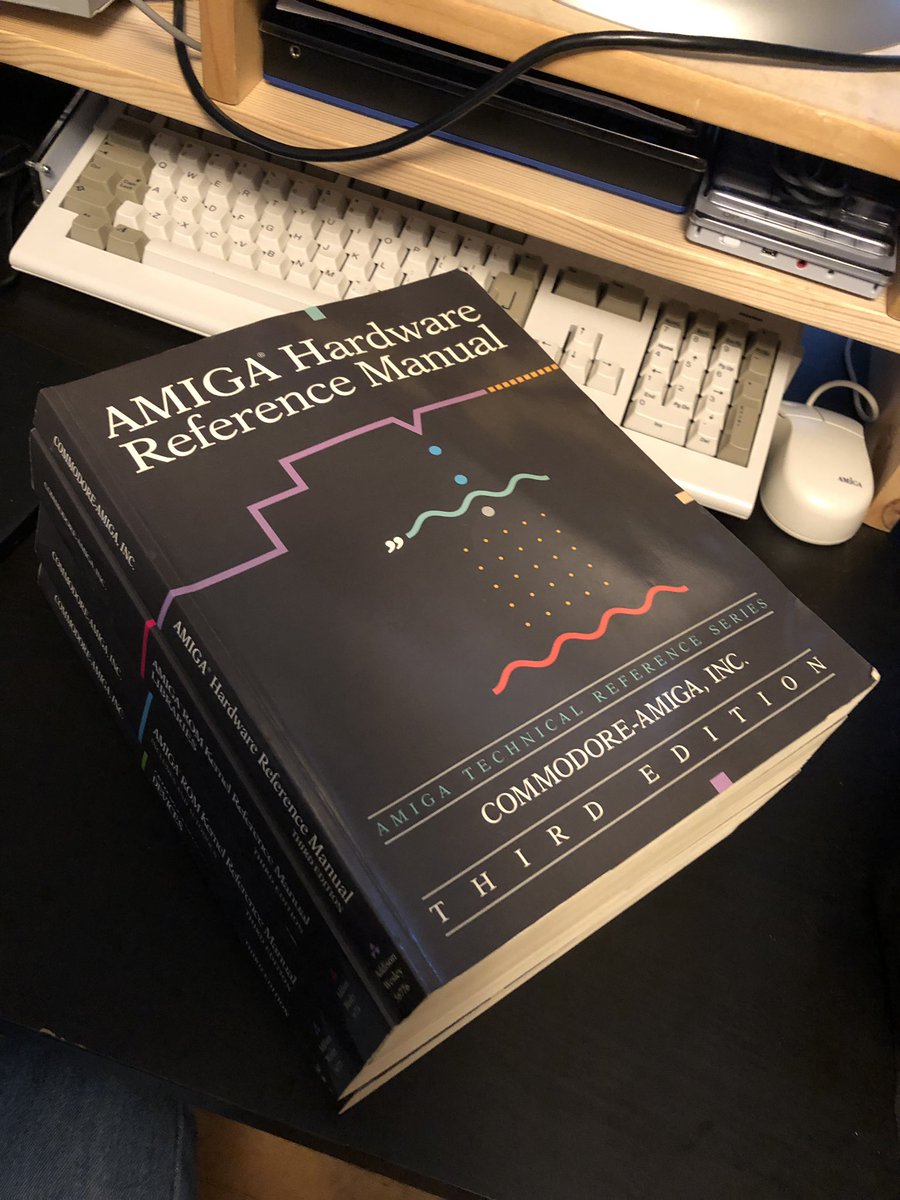Amiga ROM Kernel Manuals
In my on-going effort to reacquire all the Commodore stuff from my childhood that I gave away to a guy with a station wagon 20 years ago, I once again have a set of printed Amiga ROM Kernel Manuals.

This item is sillier than others because nobody would ever use documentation like this in printed form today, and PDFs and the actual C header files are readily available. But I had these on my shelf as early as middle school. Didn’t know how to use them.
Bought with my own money one at a time from a Barnes & Noble in Redmond, WA that had a notoriously good computer section, an entire room of computer books. Feels weird to be getting all this stuff mostly shipped from the UK today.
I forget if I’ve told this story on Twitter: I needed a C compiler but couldn’t afford one, and I wrote SAS a letter, I think asking about free or price reduced options. They sent back a full set of disks and manuals—and an invoice for the full price.
If I were an adult at the time I might have recognized that they interpreted my request as for a trial, and I could have returned them. As a kid I didn’t know what to do so I just begged my mom for the $300.
It’s a sad story—these are all sad stories. Even with a C compiler and RKMs, I barely made a dent in any of it. No adult guidance, no online support, none of the strength of character needed to overcome those deficiencies and figure it out. I just failed to use them.
It seems highly unlikely I’ll use them now, even though I have the experience and the skill. I haven’t used the PDFs. I just want that feeling again, the feeling of all of that potential I supposedly had as a child. To rifle through the pages and imagine what’s possible.
Here’s one I kept from my original collection: Learning C: Programming Graphics on the Amiga and Atari ST. computerarchive.org/files/comp/boo…
I kept it not because it’s a good book, but actually kind of because it’s a bad book. It’s as sprawling as it sounds: 1/3rd intro to C, 1/3rd basic graphics algorithms and vector math, and 1/3rd of just enough platform-specific stuff to get the examples running. I love it.
(Originally posted to Twitter on November 10, 2018. It received 47 likes and 4 retweets.)